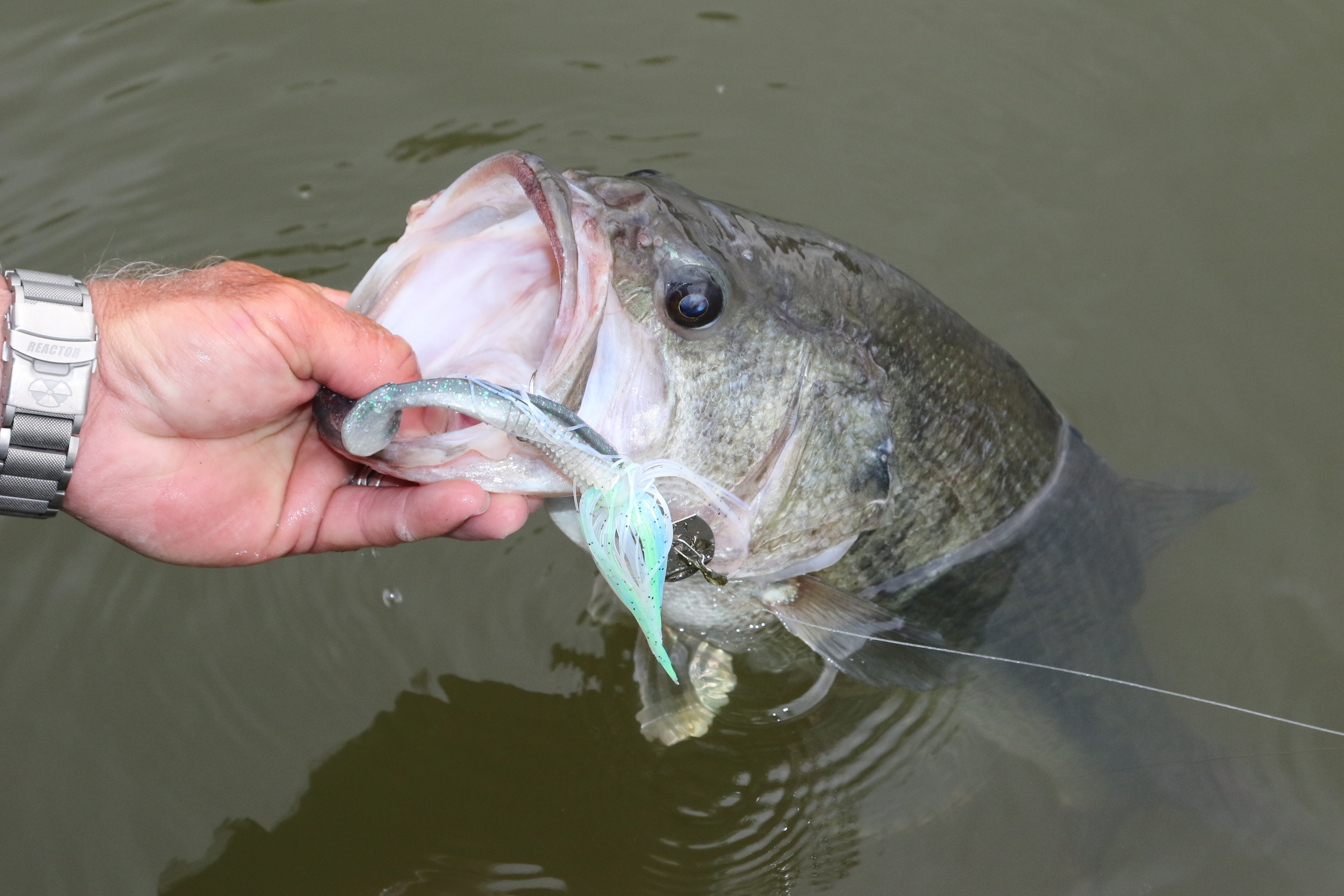
Don’t tell my wife I said this, but the majority of baitfish are born to feed larger fish; and the majority of those larger fish are born to feed top-tier predators, like those of the black bass clan.
In fairness, my wife has nothing against fishing, she just has a soft heart and doesn’t like to hear about anyone chomping the little fishies.
Largemouth, smallmouth and spotted bass hold a diametrically opposite opinion. If it fits between their jaws — game on.
No doubt, the bass that tournament anglers seek are highly efficient at finding meals; and doing so leverages their instinctive understanding of forage patterns.
When we, as anglers, learn the seasonal and historical availability of certain freshwater forage, we start to see a clear path for intercepting the bass that are planning to intercept the food. Here’s a look at five consistently productive bass forage patterns.
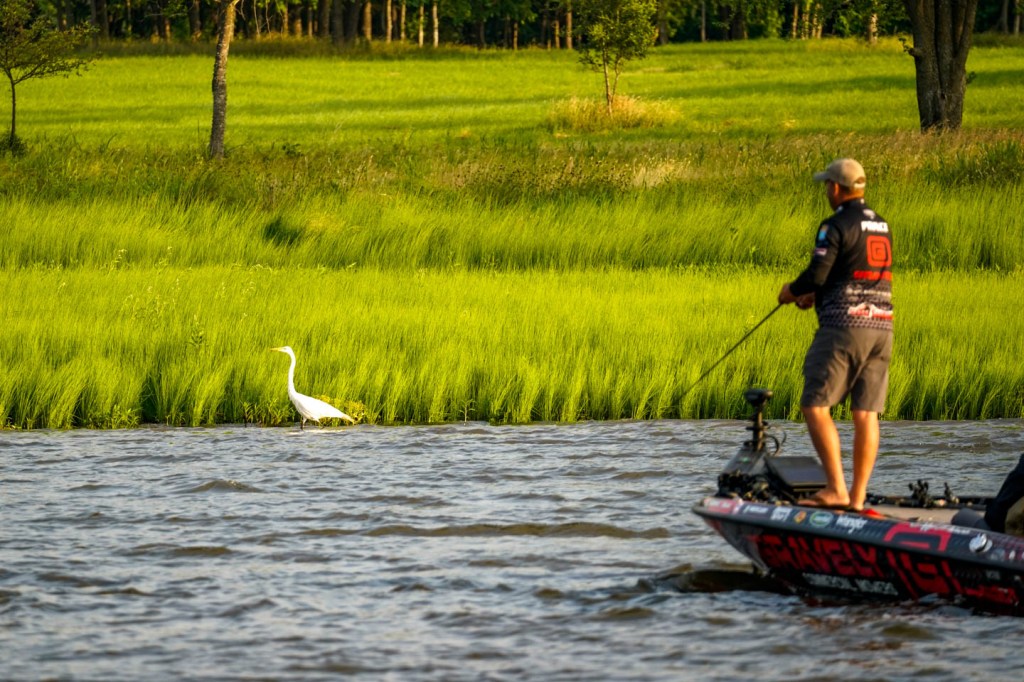
Shad spawn
When threadfin shad form massive reproductive aggregations, the distracted baitfish are easy pickings for opportunistic bass. Nature times the baitfish reproduction to follow the bass spawn, so the larger predators have an easy feeding option right after they leave the beds.
Often, tournament anglers speak of starting their day on a shad spawn and they’re not exaggerating — it’s literally a first-light deal. The shad are thought to spawn overnight and into the early morning hours, so anglers navigating at “safe light” are gonna see the action’s tail end.
Cloudy or overcast mornings may extend a shad spawn, but once sunlight fully illuminates the scene, the baitfish disperse and any bass feeding in the area also scatter.
Where to Look: Shad spawn against whatever hard edges the lake offers, so look at docks, seawalls, emergent grass lines, etc. Brock Mosley suggests watching shorelines for concentrations of wading birds and low-flying terns and gulls. Birds never miss an easy meal, so the gathering of feathers indicates shad close.
(Tip: If you find a grass hump outside an area where shad have been spawning, you might find a group of opportunistic bass that no one has been fishing.)
Productive Tactics: Shad spawns present a frantic, fast-paced feeding scenario, so make good use of the brief window of opportunity by throwing reaction baits such as walking topwater plugs, spinnerbaits, bladed jigs, swim jigs, or crankbaits. Whites, grays, and other shad-mimicking colors are best.
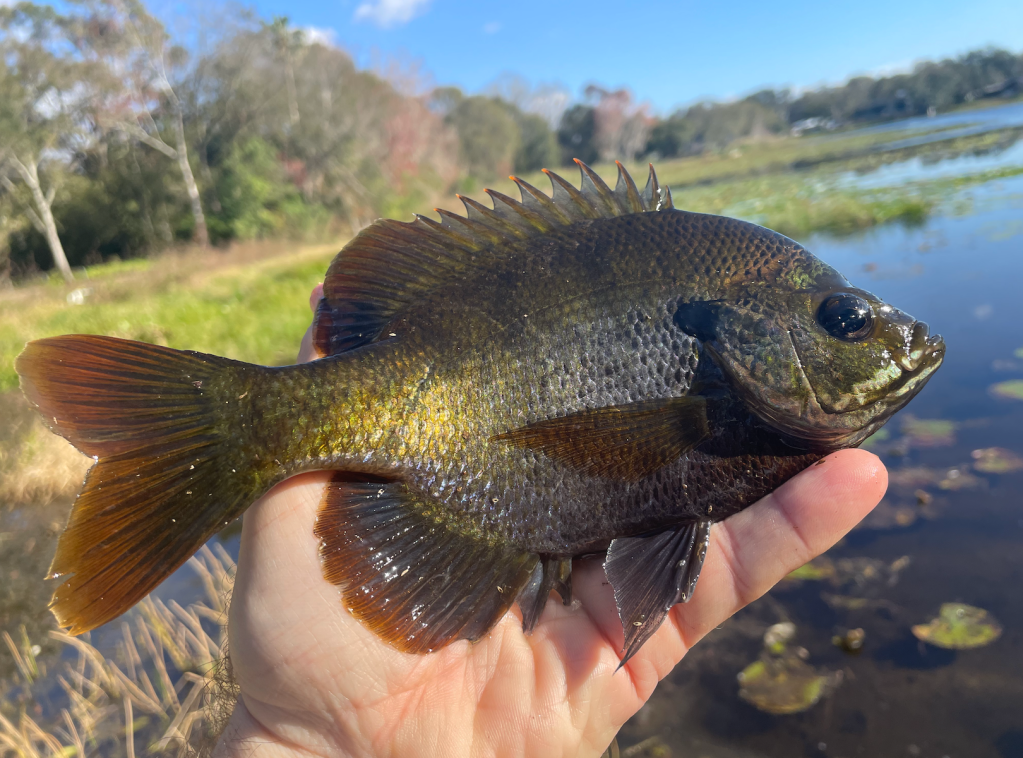
Bream beds
Same principle as the shad spawn, the bluegill’s reproductive cycle offers postspawn bass convenient meals. The major difference is the bream’s clear bed clustering, which looks like a honeycomb pattern of small, sandy discs. Also, spawning bream will hold on these nests throughout most of the day, during a seasonal cycle that often sees waves of bream spawning from late spring throughout the summer.
Bluegill rank high on the bass menu, but these panfish are notorious nest raiders bent on eating bass eggs, as well as newly hatched bass fry. Suffice it say, bass are all too happy to administer some balancing payback by staking out bream beds and dashing in to gobble any that drop their guard.
Where to Look: Bream favor protected areas with firm bottom. Add in some overhanging tree limbs and you have the ideal spot. Attractive areas will often find clusters of bream beds spaced a few boat lengths apart, so take your time and diligently work the area.
Hefty bass often form small feeding groups known as “wolf packs” that periodically dash across the bedding zone, but watch the outskirts and you’ll typically see several ominous shadows waiting for the right moment.
Productive Tactics: Topwater frogs, buzz toads, poppers and short prop baits like the Brian’s Prop Bee can produce jaw-dropping strikes, especially during the low light or early mornings and late afternoon. During the warmer parts of the day, working deeper into the water column with a lightly weighted Texas-rigged creature bait or a wacky-rigged stick worm gets the bites.
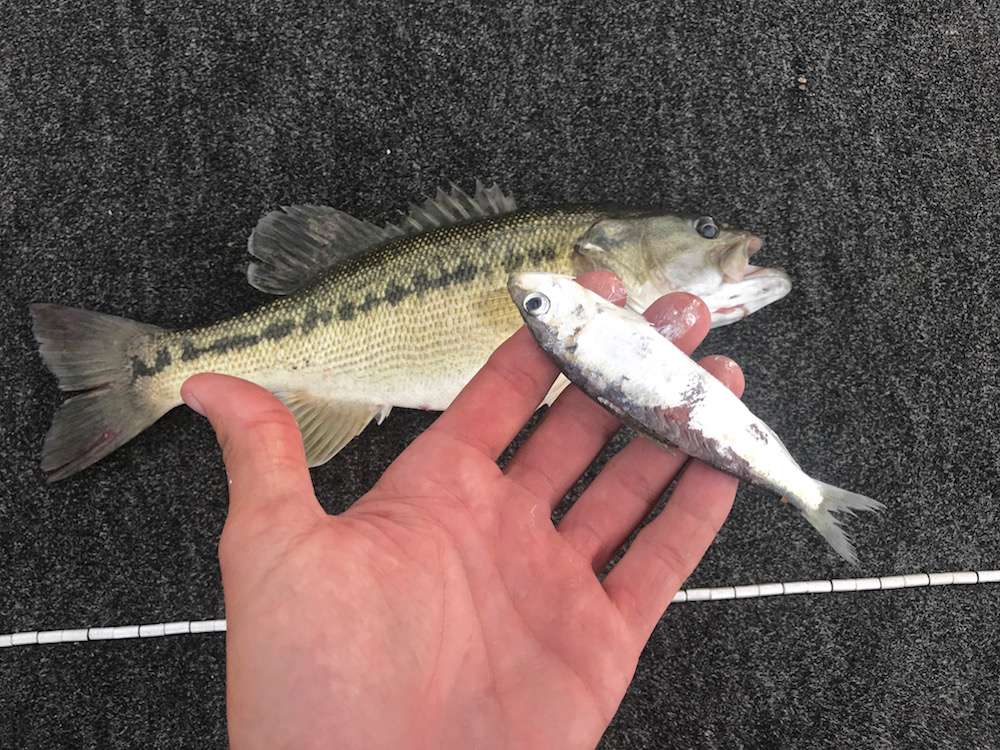
Blueback herring
By nature, bluebacks live anadromous lives — they live in saltwater and enter freshwater to spawn. Naturally ranging from Nova Scotia to Northeast Florida, these large-growing forage fish have been introduced into various inland fisheries such as the Savannah River, which includes the popular tournament waters of Lake Hartwell.
Complementing native forage, the bluebacks have brought a surge in the size and numbers of spotted bass. Largemouth love ‘em too, but spots are more naturally geared for the open water where bluebacks roam.
Where to Look: Like shad, herring are vulnerable during their spring spawns, however, the notable story here involves their daily lives. A high-strung and fleet-footed baitfish, bluebacks seem to be constantly on the move, so unless you want to run around the lake chasing phantoms, this is more of a reactionary game.
Often, anglers fishing docks, brush piles, cane piles (like Hartwell), points, etc. can pick off a good fish or two by quickly responding to schooling activity behind or around their position.
Productive Tactics: Because the bass chasing blueback herring are used to short glimpses of fast-moving forage, they’ll respond well to big, aggressive topwaters like the boisterous pencil popper design. Underspins with swimbait trailers also have a proven track record, as do fluke style baits. All these options are effective for quick shots to the fish that randomly rise in frantic schooling activity.
Whatever you throw, work the bait aggressively and don’t worry about long presentations. If no one responds in 20-30 seconds, the moment has past and your bait’s getting lonely. Reel up and cast again.
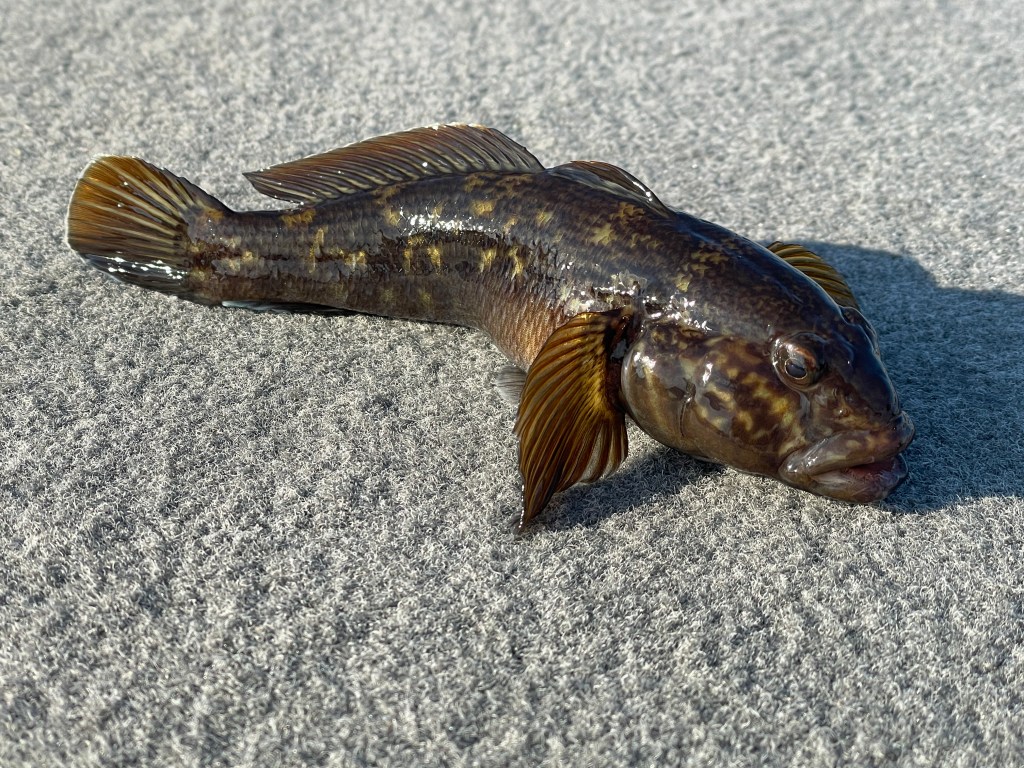
Gobies
This prolific species reached the Great Lakes/St. Lawrence Seaway during the 1990s through ballast water released from oceangoing ships. This invasive species lacks a swim bladder, so they hug the bottom where smallmouth gobble as many as they can catch.
Recent decades have seen the goby influence yielding an astounding increase in smallmouth bass weights — to the point that the last two Elite events at the St. Lawrence have yielded Century Club entries, which recognize four-day totals of 100 pounds or more. (Canadian pro Cory Johnston, who finished second at the 2022 event, made history by becoming the first angler to enter the Century Club with all smallmouth.)
Where to Look: Widely dispersed throughout the Great Lake and St. Lawrence, gobies feed around rock reefs, shoals, boulders and pretty much any current-breaking structure.
Productive Tactics: Anglers targeting smallmouth bass that prey on gobies do so with Ned rigs, tubes, and dropshots fitted with short, plastics like the Berkley MaxScent Flat Worm or the XZone Lures Slammer.
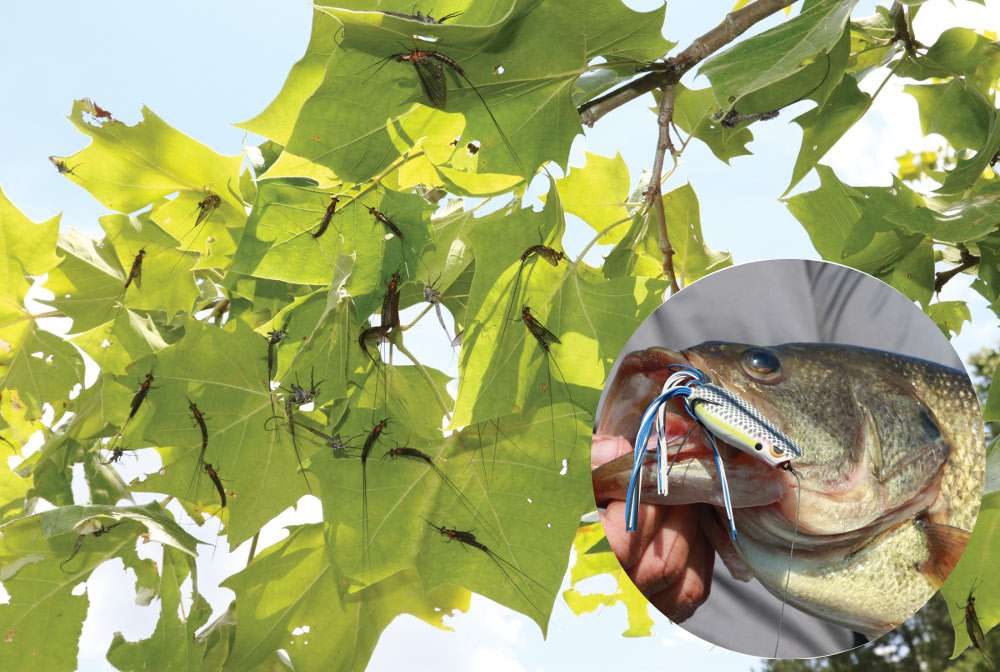
Mayflies
North America has about 658 mayfly species, with the Giant Burrowing Mayfly (Hexagenia limbata) the most common. With a deeply bowed body, long tail filaments, extending front legs and double upturned wings, the mayfly’s short adulthood of one to two days includes two emergence phases.
The fly spends its first year clinging to rocks or burrowed into the lake or river bottom. After this nymph phase, the insect molts and rises to the surface. Stage two brings them into full adult development, as they fly up to waterside trees and other structures in preparation for mating, after which they die.
This final stage brings such an astounding volume of mayflies that local roads and sidewalks see mounds of dead mayflies several feet high. But while this annual occurrence requires additional municipal maintenance, it also creates absolute gorge fests for local bass. Smallmouth are particularly fond of stuffing their bellies with mayflies, but they, along with largemouth, also target the perch and bream drawn to the buffet.
Where to Look: When the mayfly hatch is on, willow trees and other waterside vegetation will literally black out with insect density. You’ll see plenty of first stage flies floating at the surface and, those that have already mated often end up there, as well.
Bass and smaller predators will put on quite a show as they clamor to take advantage of the mayfly marvel. Look for surface pops and you’ll find the feeding zones.
Productive Tactics: This is largely a surface deal, so stick with topwaters and you’ll find plenty of takers. Poppers and popping frogs are hard to beat but keep a wacky-rigged stick worm or a small swimbait on a ball head jig handy for subsurface follow-ups.
Here’s a tip from Elite pro Drew Cook: Find a tree that’s haired over with mayflies and shake the overhangs to loosen flies. When bream close in to feed, bass will take advantage of the situation. To maximize the moment, Cook keeps his distance and intentionally snags a topwater frog in the branches. This allows him to shake out those flies without spooking the fish.
It rarely takes more than a cast or two before a hungry bass makes its presence known.





